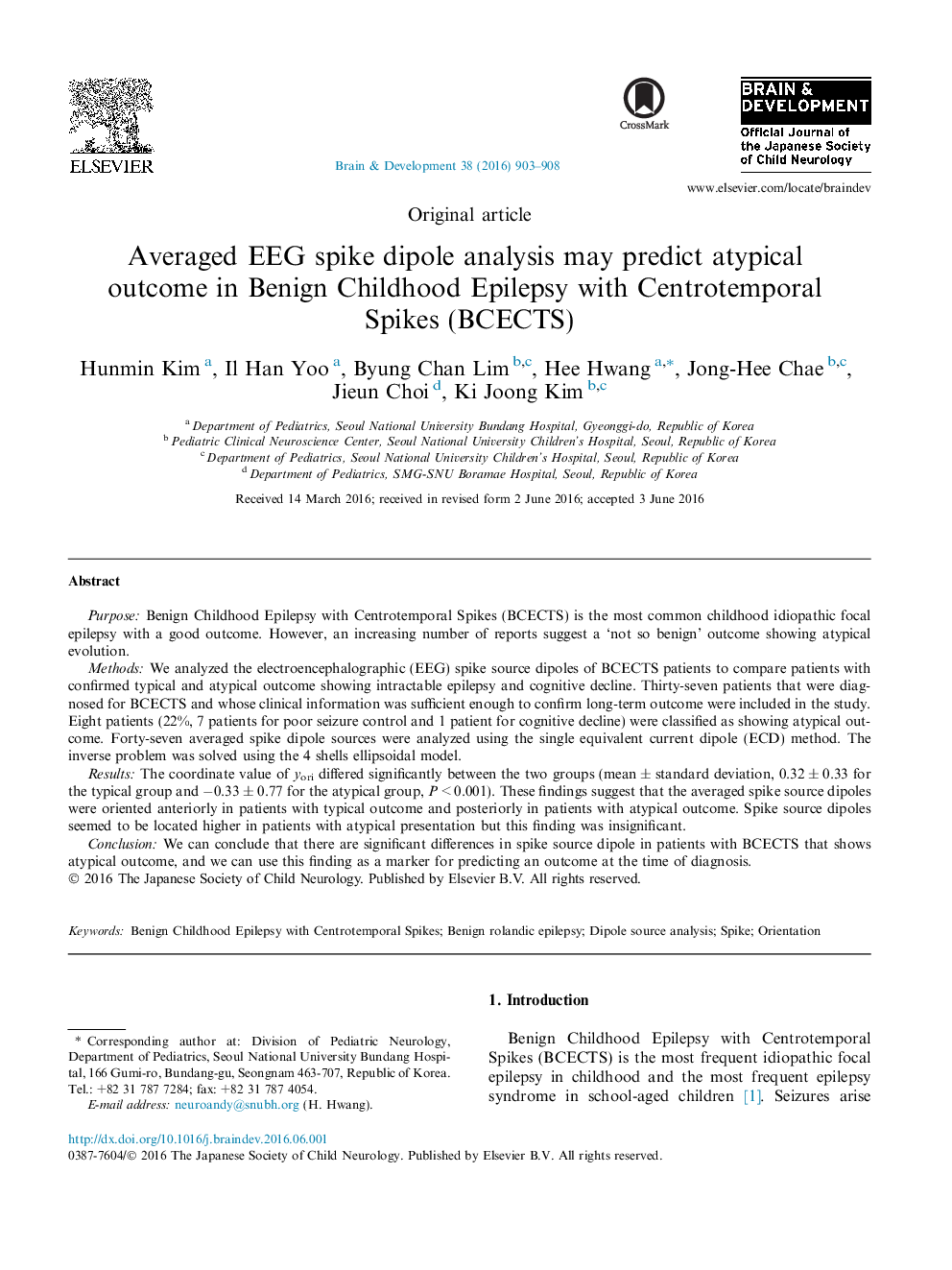| Article ID | Journal | Published Year | Pages | File Type |
|---|---|---|---|---|
| 5626306 | Brain and Development | 2016 | 6 Pages |
PurposeBenign Childhood Epilepsy with Centrotemporal Spikes (BCECTS) is the most common childhood idiopathic focal epilepsy with a good outcome. However, an increasing number of reports suggest a 'not so benign' outcome showing atypical evolution.MethodsWe analyzed the electroencephalographic (EEG) spike source dipoles of BCECTS patients to compare patients with confirmed typical and atypical outcome showing intractable epilepsy and cognitive decline. Thirty-seven patients that were diagnosed for BCECTS and whose clinical information was sufficient enough to confirm long-term outcome were included in the study. Eight patients (22%, 7 patients for poor seizure control and 1 patient for cognitive decline) were classified as showing atypical outcome. Forty-seven averaged spike dipole sources were analyzed using the single equivalent current dipole (ECD) method. The inverse problem was solved using the 4 shells ellipsoidal model.ResultsThe coordinate value of yori differed significantly between the two groups (mean ± standard deviation, 0.32 ± 0.33 for the typical group and â0.33 ± 0.77 for the atypical group, P < 0.001). These findings suggest that the averaged spike source dipoles were oriented anteriorly in patients with typical outcome and posteriorly in patients with atypical outcome. Spike source dipoles seemed to be located higher in patients with atypical presentation but this finding was insignificant.ConclusionWe can conclude that there are significant differences in spike source dipole in patients with BCECTS that shows atypical outcome, and we can use this finding as a marker for predicting an outcome at the time of diagnosis.
